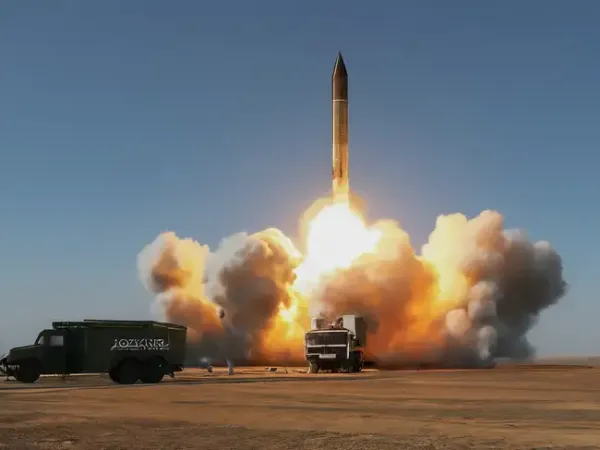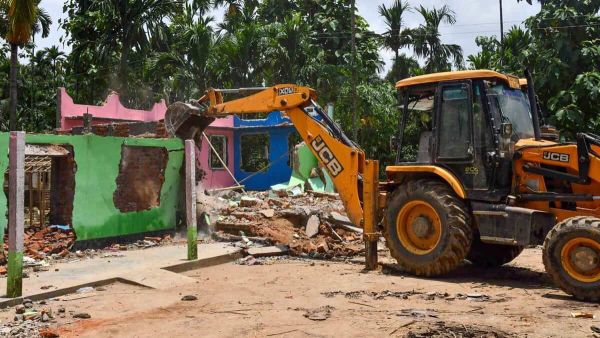India has made a quiet but bold leap in missile technology. The Defence Research and Development Organisation (DRDO) has tested what it calls the country’s most advanced missile system to date: the Extended Trajectory Long Duration Hypersonic Cruise Missile (ET-LDHCM).
Unlike the BrahMos, Agni-5 or Akash, this one goes further and faster. It was built under Project Vishnu, a classified programme meant to develop next-generation hypersonic weapons. Defence officials confirmed the missile can hit targets up to 1,500 km away at Mach 8. By comparison, the original BrahMos started with a range of 290 km.
In November 2024, DRDO ran a 1,000-second ground test of this scramjet, proving it could handle the extreme heat and speed. The missile can withstand temperatures up to 2,000 degrees Celsius, critical when you’re tearing through the sky at nearly 11,000 km per hour.
Analysts say the missile’s in-flight manoeuvrability is what sets it apart. It can adjust its course mid-air, something that makes life difficult for modern air defence systems.
Defence analysts suggest this missile could shift power balances in South Asia. It puts India alongside the United States, Russia and China — countries that have already fielded indigenous hypersonic missiles.
In the words of a senior DRDO scientist: “The first scramjet test in November 2024 ran for 1,000 seconds. That showed the engine could do what we needed.”
Missiles like the ET-LDHCM are only the start. Hypersonic glide vehicles are expected to join service by 2027 or 2028. Full operational use of the ET-LDHCM could come by 2030.
Materials science has played its part too. Heat-resistant coatings, co-developed by DRDO and the Department of Science and Technology, keep the missile structurally sound in searing conditions. The same coatings protect it against oxidation for naval operations.
With the ET-LDHCM, India is saying it’s ready for new challenges. It can now match or outpace some of the world’s top-tier missile systems. The country cuts reliance on imports, builds local know-how and signals it’s not standing still as regional security shifts.
As a defence analyst put it: “This missile could be a tipping point for South Asian military dynamics. Its speed and survivability change the game.”
The test flight might have been quiet. Its message is not.
Unlike the BrahMos, Agni-5 or Akash, this one goes further and faster. It was built under Project Vishnu, a classified programme meant to develop next-generation hypersonic weapons. Defence officials confirmed the missile can hit targets up to 1,500 km away at Mach 8. By comparison, the original BrahMos started with a range of 290 km.
The heart of the missile: Scramjet engine
A key part of the ET-LDHCM’s power comes from its scramjet engine. Unlike older engines that carry oxidisers on board, the scramjet uses oxygen from the atmosphere. This keeps the missile lighter and lets it maintain high speeds for longer.In November 2024, DRDO ran a 1,000-second ground test of this scramjet, proving it could handle the extreme heat and speed. The missile can withstand temperatures up to 2,000 degrees Celsius, critical when you’re tearing through the sky at nearly 11,000 km per hour.
Ready for any platform
Flexibility is part of the plan. The ET-LDHCM can be launched from land, ships or aircraft. This makes it useful for all branches of India’s military. It can carry conventional or nuclear warheads weighing up to 2,000 kg. Because it flies at low altitudes, it stays harder to detect and intercept.Analysts say the missile’s in-flight manoeuvrability is what sets it apart. It can adjust its course mid-air, something that makes life difficult for modern air defence systems.
A message beyond borders
India’s timing is telling. The test comes as the region faces fresh friction. Russia and Ukraine remain locked in conflict. Israel and Iran are trading threats. Relations with China and Pakistan remain tense.Defence analysts suggest this missile could shift power balances in South Asia. It puts India alongside the United States, Russia and China — countries that have already fielded indigenous hypersonic missiles.
Project Vishnu: Quiet but ambitious
Project Vishnu is DRDO’s biggest bet yet on hypersonic systems. It plans to deliver twelve different weapons, from offensive missiles to interceptors that can knock incoming threats out of the sky.In the words of a senior DRDO scientist: “The first scramjet test in November 2024 ran for 1,000 seconds. That showed the engine could do what we needed.”
Missiles like the ET-LDHCM are only the start. Hypersonic glide vehicles are expected to join service by 2027 or 2028. Full operational use of the ET-LDHCM could come by 2030.
Made in India, built to last
One thing sets this missile apart. It was designed and built entirely with home-grown technology. Small and medium enterprises and private contractors played a key part. This feeds into India’s push for self-reliance under its defence manufacturing policy.Materials science has played its part too. Heat-resistant coatings, co-developed by DRDO and the Department of Science and Technology, keep the missile structurally sound in searing conditions. The same coatings protect it against oxidation for naval operations.
With the ET-LDHCM, India is saying it’s ready for new challenges. It can now match or outpace some of the world’s top-tier missile systems. The country cuts reliance on imports, builds local know-how and signals it’s not standing still as regional security shifts.
As a defence analyst put it: “This missile could be a tipping point for South Asian military dynamics. Its speed and survivability change the game.”
The test flight might have been quiet. Its message is not.
( Originally published on Jul 16, 2025 )





